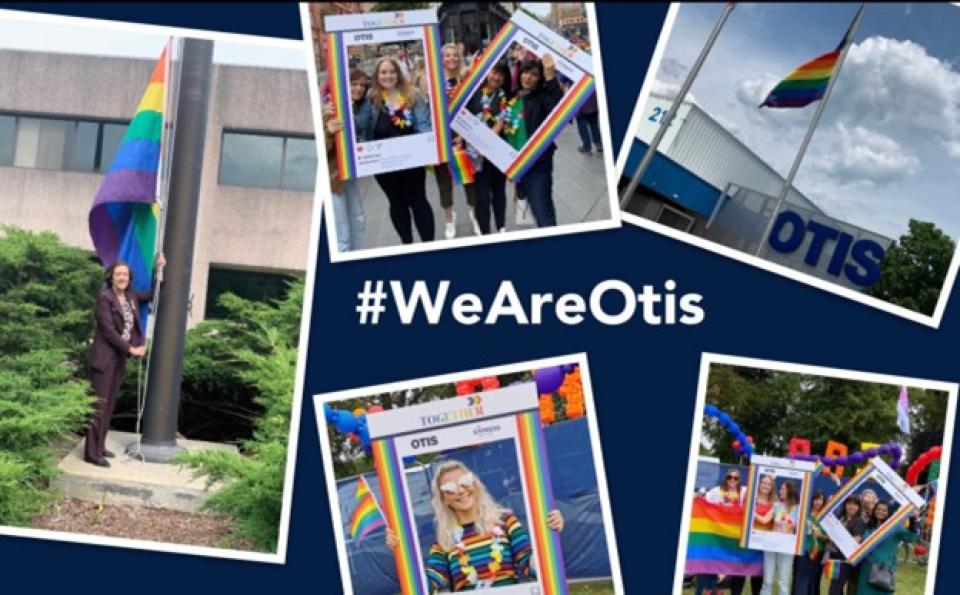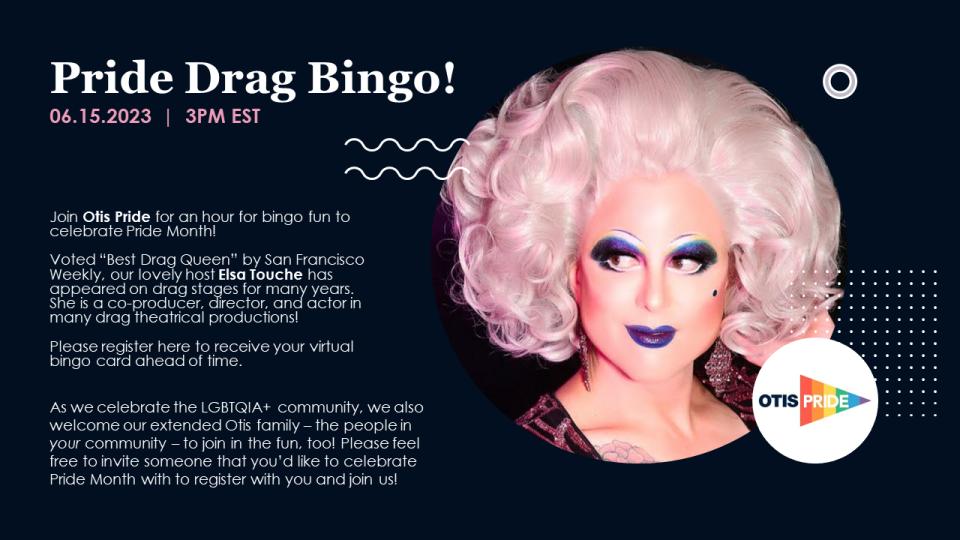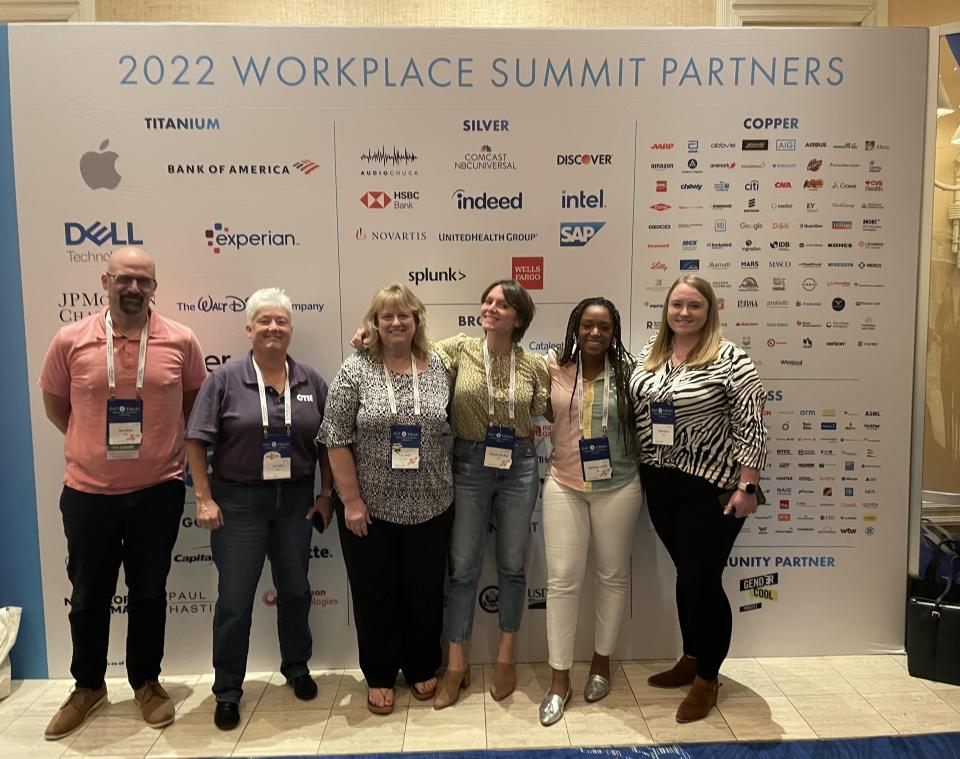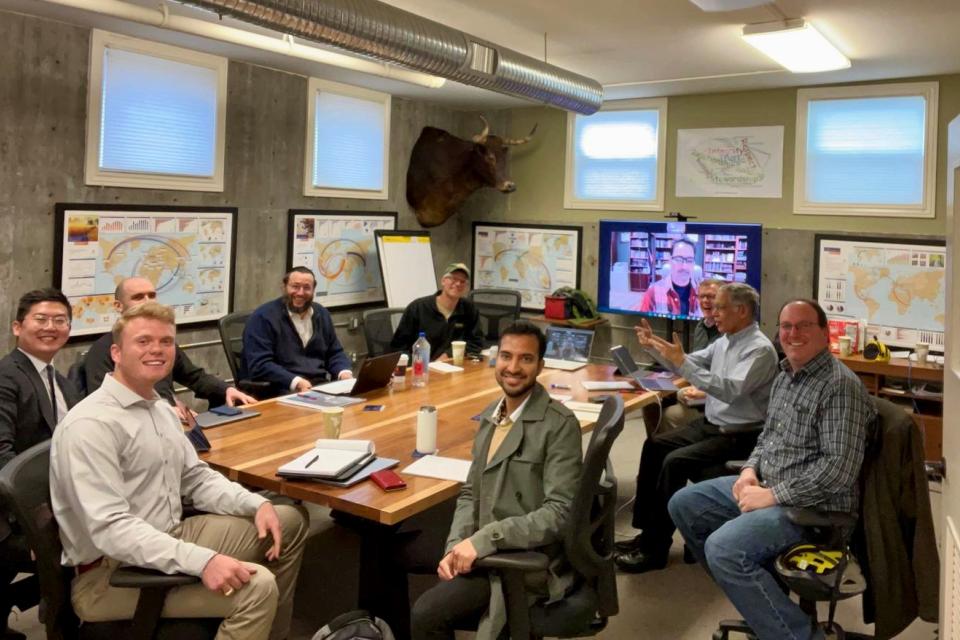5 Tips for Driving Impactful Pride Celebrations at Work

Happy Pride to my UC Davis Graduate School of Management community!
For the last two years, I’ve chaired the Otis Pride Employee Resource Group (ERG), a network of almost 100 LGBTQIA+ employees and allies across North America of my employer, Otis. Every June, our ERG prioritizes Pride Month to raise awareness around LGBTQIA+ issues and build a robust allyship culture.
Why is Pride Important to Me?
In 2008, I declared gender and women’s studies as my major from UC Berkeley and, at the time, I had no idea where it would take me. My current role as lead project manager for Otis, a leader and innovator in the vertical transportation industry, was nowhere on my radar. Now, I’m in my second year in the UC Davis Bay Area Part-Time MBA program. I chose the Bay Area MBA program for its commitment to student development and growth.
As an undergraduate, I pursued gender and women’s studies to better understand the limitations of socially and medically constructed norms around sex and gender. I desperately needed to know more about women like me, women with XY chromosomes.

I am intersex—the often invisible “I” at the end of LGBTQIA+. Despite the common misconception that biological sex is discrete, it’s estimated that 2% of the global population have an intersex variation that affects reproductive anatomy.
As a teenager, I learned that I was born with an intersex variation called Swyer Syndrome. Medical tests would reveal that my chromosomal sex is XY—rather than XX—and that I do not have functioning sex glands (e.g. ovaries or testes) to spur natural sex hormone production.
You can watch my story in a video for the Interface Project on Youtube, or read about it in this MTV article, written in 2015. Keep in mind that I recorded the video in one take and that I wouldn’t enroll in Articulation and Critical Thinking by Lecturer Brian Kennedy for another seven years!
The video has been watched by 11,000 viewers, including at least one peer from my MBA cohort, funny enough. During an icebreaker in our Marketing Management course, I had shared my prior intersex advocacy with classmates and this individual kindly approached me after class and shared that he’d watched the video previously with his children, deeming it an example of “owning one’s experience.”
Using your voice, or “owning your experience,” is an important factor for employees that identify as lesbian, gay, bisexual, transgender, intersex, queer, questioning or asexual. And even though we have seen recent triumphs in LGBTQIA+ workplace equality, more than 1 in 4 LGBTQIA+ employees are not broadly out at work. Fortunately, OTIS has been an industry leader in the construction sector by promoting LGBTQIA+ diversity through the Employee Resource Group framework.
Given the continued wave of anti-LGBTQIA+ discriminatory legislation in the U.S., this advocacy and awareness work is more important than ever.
Why Celebrate Pride?
If you are unfamiliar with why we celebrate Pride, the first Pride march was organized to signify the anniversary of The Stonewall Uprising in 1969. Though not the first uprising against police brutality against the LGBTQIA+ community, Stonewall represents a significant milestone in LGBTQIA+ history.
Interested in planning Pride Month activities at your organization? Whether you work at a small, medium, or large firm, I’d like to share five tips for driving ERG impact during Pride Month:

1. Start Organizing Early
Our ERG typically starts brainstorming around three months prior to June 1. Having enough time to plan will only increase your success. During this phase, take stock of what has worked in previous years and decide what events to replicate or leave behind. If possible, start connecting with stakeholders in your diversity, equity, and inclusion, communications, and public relations departments early for action-planning.
For example, for the last three years we have successfully organized raising the Pride flag at our world headquarters in Farmington, Connecticut.
Raising the flag sends an important visual cue that our company aims to create a safe workplace for our LGBTQIA+ employees and has served as our annual kick-off for Pride Month. Last year, we updated the flag to include representation for intersex, trans, and BIPOC communities!
2. Build Your Communications Plan
Once you have a list of actionable objectives, it’s time to strategize your communications.

Ask yourself:
- Who will be your intended audience?
- Are you hoping to reach existing ERG members or the entire company?
- What platforms will you use for internal and external communications?
- How early will you start sending out your event invitations?
Create a high-level plan that captures how you want your audience to feel, what actions you want them to take, and what you want them to know throughout the month. Add in a calendar of events as well.
Share this plan with internal stakeholders who will help champion your message. In the past, we have shared blog posts highlighting our members’ LGBTQIA+ role models on internal social channels and promoted member storytelling on our external social platforms.
Having a guiding theme can also set the proper tone for the month. Last year, our theme was #RiseWithPride and this year’s theme is #ShowYourPride. Having a consistent message helps to keep your ERG focused. There are some great templates available to use from the Human Resources Campaign or Out and Equal.
3. Follow a Hybrid Model
In a post-pandemic world, it’s important to create a range of virtual and in-office offerings for team members.
Below are a few ideas of virtual and in-person events that you could explore at your firm:

Virtual Engagement Ideas
- Share branded collateral for desktop and virtual conference calls. Distribute instructions for updating your signature with gender pronouns (and why they matter!). Host virtual speaker presentations, trivia, or drag bingo.
- Boost a crowd-sourced playlist on Spotify. Check out Otis Pride’s 2023 playlist here!
- Lead a virtual book club.
- Plan a photo-sharing competition on internal social media channels.
- Showcase a story-telling series on social media.
In-Person Engagement Ideas
- Plan a community outreach event with a local non-profit or LGBTQIA+ center
- Plan an in-person story-telling session
Looking for low-cost virtual programming? Lean on your ERG members for potential outside speakers; some of our most popular speaker presentations have been led by family members and close connections of our ERG members. There are also plenty of free events each year sponsored by Seramount, Out and Equal, and the Human Rights Campaign.
4. Partner with ERGs
To avoid sharing just one narrative, be sure to connect and collaborate with other ERGs or business resource groups (BRGs) to plan intersectional programming. We’ve had great success partnering with ERGs to plan gender self-identification campaigns, lead small group discussions around unpacking intersectional allyship, and aligning our efforts with those of other global LGBTQIA+ ERG leaders working at Otis.
Whenever possible, it is important to ask yourself who is being left out or out of reach during your Pride. Pride Month is a time to question our own bias and uplift underrepresented groups under the LGBTQIA+ umbrella.

5. Monitor and Track Success
Finally, be sure to constantly gather participant feedback data after each of your events. This valuable data can help guide where your ERG should invest your resources in the future.
I firmly believe that celebrating diversity along the gender identity, sex, and sexual orientation spectrum is essential to achieving improved employee satisfaction. Align your ERG’s strategy with any potential opportunities identified in the results of your firm’s employee satisfaction survey.
Whether you work at a small, medium, or large-scale firm, there are a number of ways that your organization can make an impact to promote LGBTQIA+ workplace equality. Investing in Employee Resource Groups is an effective tool for fostering a diverse company culture where everyone can feel a sense of belonging and rise to their full potential.
Just remember, Pride doesn’t start and end in June. Make sure to keep the momentum going forward year-round!


